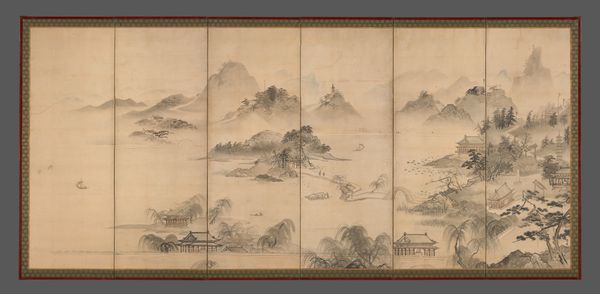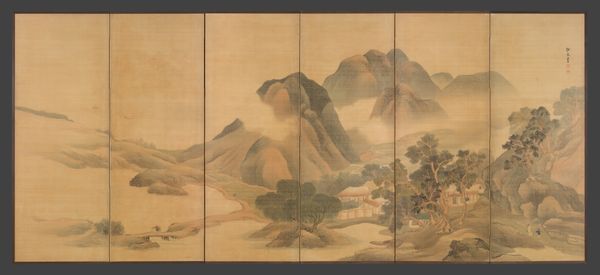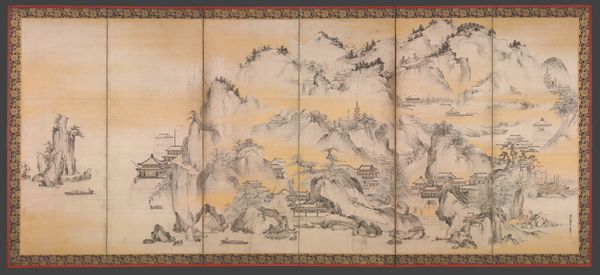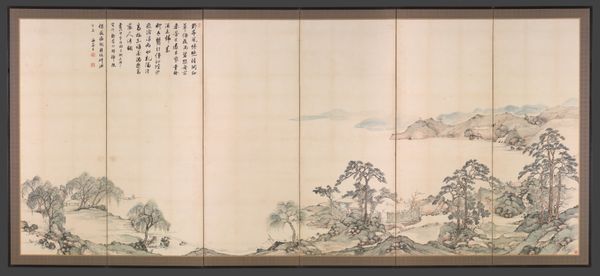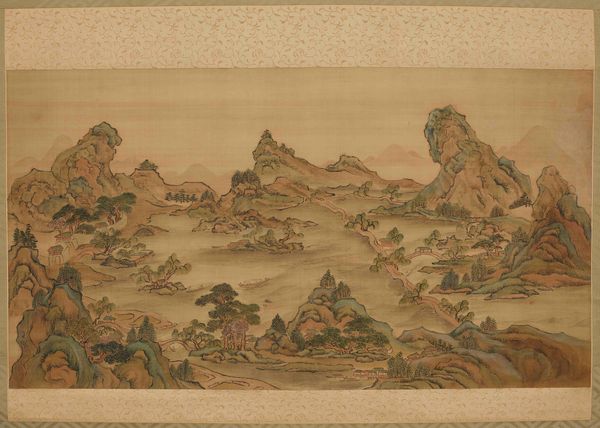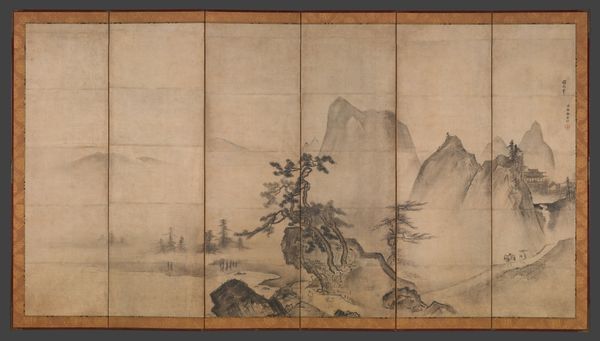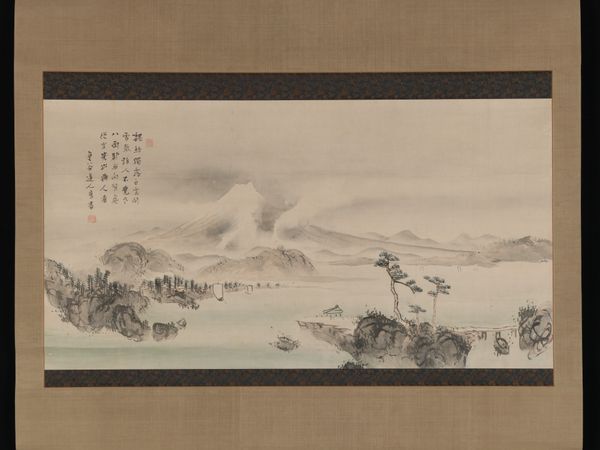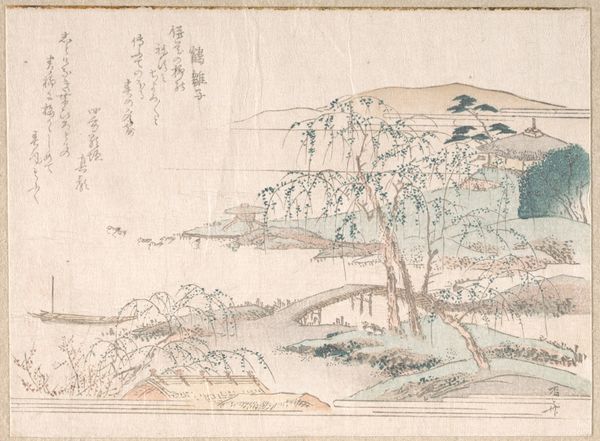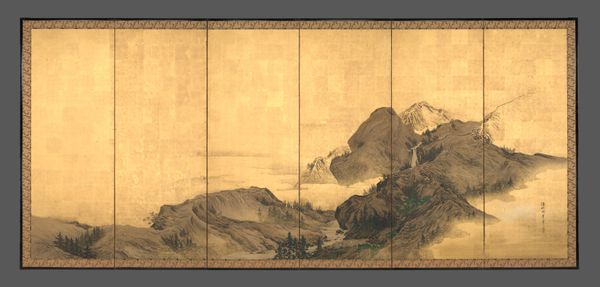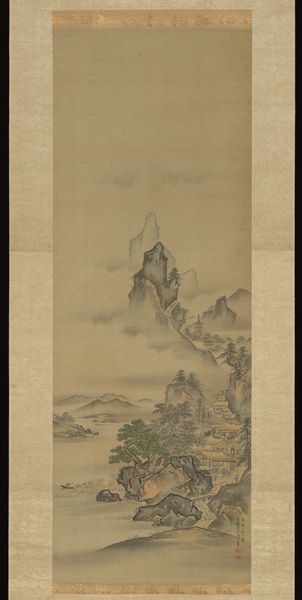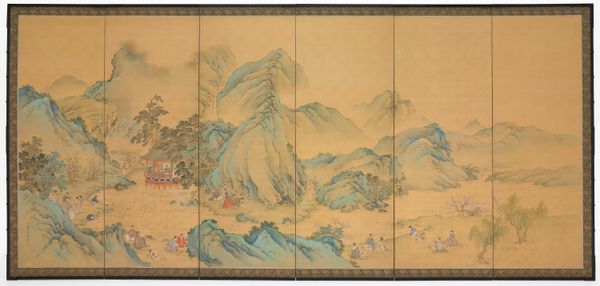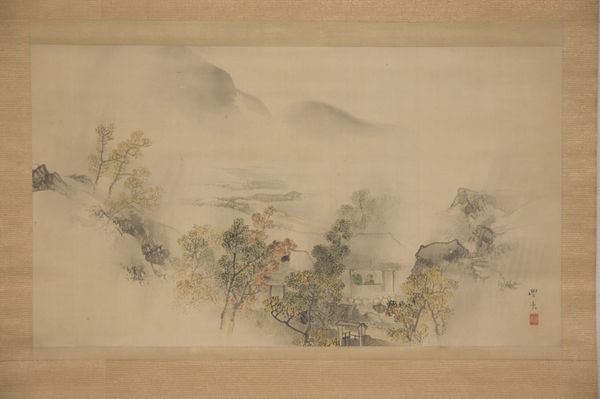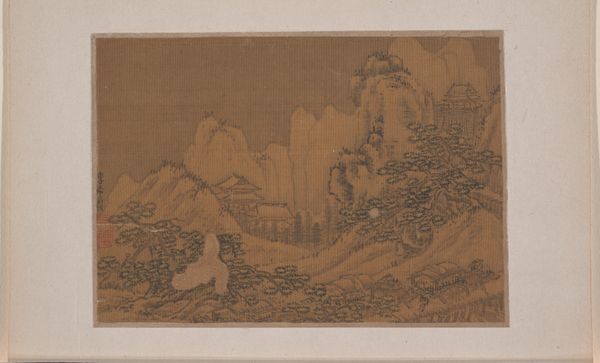
painting, paper, ink
#
painting
#
asian-art
#
landscape
#
paper
#
ink
#
yamato-e
#
calligraphy
Dimensions: Image: 13 1/4 × 71 7/8 in. (33.7 × 182.6 cm)
Copyright: Public Domain
Curator: Take a moment to observe this landscape by Wang Gai, created in 1686. The artwork, entitled "Reminiscence of Jinling," employs ink and color on paper. It is a scroll painting within the collection of the Metropolitan Museum of Art. Editor: My first thought is, it evokes a feeling of nostalgia. The soft hues and blurred lines make it seem almost dreamlike. I find myself wondering what daily life might have been like. It really romanticizes the experience of simply existing in a certain space. Curator: The composition relies on traditional perspective, drawing the viewer's eye deeper into the painting. Each element of nature has symbolic weight: the mountains representing stability and permanence, the water suggesting the passage of time, the carefully placed architecture echoing imperial grandeur and an appreciation for learning. Editor: I appreciate your insight. I keep thinking about who this was painted for. This piece seems to gloss over class dynamics and politics, creating this tranquil space that does not fully align with what was probably happening on a social and historical scale. Curator: Certainly. We cannot deny it is an idealized rendering of place. This reminds us that the beauty itself operates as a means of social navigation; beauty holds a position in which class dynamics are obfuscated to those who occupy a more prestigious seat in the world. In this piece, for example, a more privileged status and greater resources could allow an inhabitant of this locale the time and capacity to muse on a vista and develop a sense of nostalgic attachment to this same space. Editor: Your read reminds me that memory and reminiscence are tied to social identities. This piece is valuable precisely because it provides a lens through which we can study the historical and cultural politics of landscape as both aesthetic object and social commodity. Curator: Ultimately, the work succeeds in conjuring a potent sense of place through carefully calibrated details, both tangible and evocative. Editor: Right, so although this is indeed an aesthetic idealization of time and space, understanding how such images shape cultural perceptions over time remains extremely valuable.
Comments
No comments
Be the first to comment and join the conversation on the ultimate creative platform.
